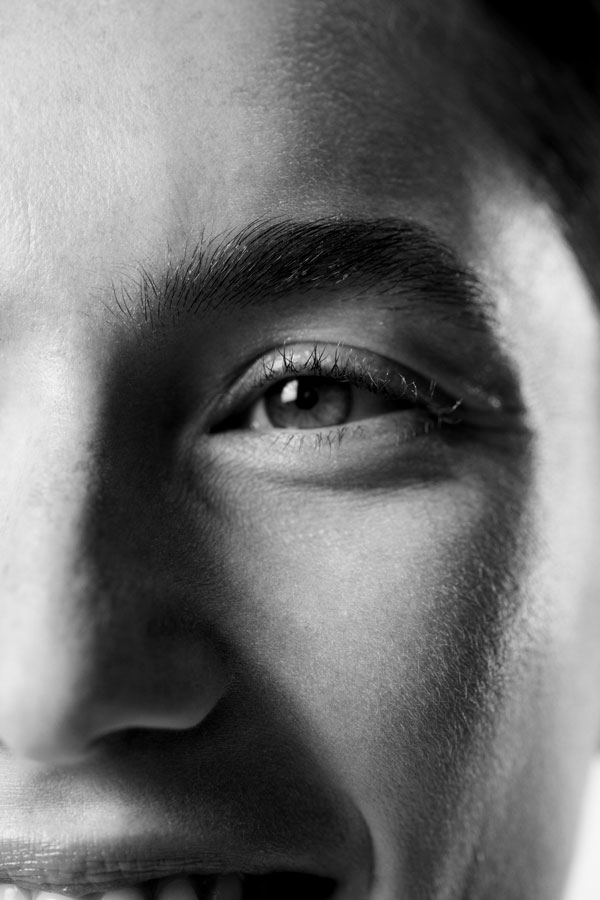
Skin resurfacing with Fraxel DUAL® Laser in Berlin
Fraxel DUAL® is a state-of-the-art, non-invasive laser treatment that specifically improves skin texture, reduces pigmentation spots and diminishes wrinkles. The innovative technology stimulates collagen production and ensures a fresh, more even and radiant complexion. The treatment is ideal for people who want to combat the first signs of skin ageing or minimize acne scars and sun damage.
Duration of treatment
Anesthesia
Downtime
Type of treatment
Hospitalization
Lasts
Price
Duration of treatment
Type of treatment
Anesthesia
Downtime
Hospitalization
Lasts
Price
Fraxel DUAL uses two laser wavelengths, each of which treats specific skin problems in a targeted manner. The technology is based on fractional laser treatment, where microscopic areas of skin are targeted with pulses of light to activate the body's own healing processes and improve skin texture. This fractional method ensures that healthy skin areas between the treated zones remain intact, which shortens the healing time and minimizes the risks. The treatment takes about 30-60 minutes. The skin is prepared with a numbing cream to minimize discomfort, which is applied for 60 minutes before the treatment.
Wavelengths
The two wavelengths can be used either individually or in combination, depending on the individual needs of the skin and the desired results.
1st wavelength - 1550 nm (for deeper skin layers):
The first wavelength of 1550 nm penetrates deeper into the skin and is particularly effective in treating deeper skin problems such as acne scars, larger wrinkles and improving skin texture. It stimulates collagen production, resulting in firmer and smoother skin. It is therefore particularly suitable for people with a skin type that has few pigmentation problems and needs firmer skin. It can also be helpful in the treatment of stretch marks and large-pored skin.
2nd wavelength - 1927 nm (for superficial skin layers):
The second wavelength of 1927 nm works on the surface of the skin and is particularly effective against pigmentation disorders such as sun spots, age spots and melasma. It helps to even out the skin tone and refine the skin's overall appearance. This wavelength has a gentle effect on the skin and promotes cell renewal without severely damaging the top layer of skin.
Combination of both wavelengths:
In many cases, a combination of both wavelengths is recommended to comprehensively treat both the surface and the deeper layers of the skin. This dual application enables a holistic improvement in the appearance of the skin - from tightening to the elimination of pigmentation spots and wrinkles.
Healing and aftercare
After treatment, there may be slight to moderate redness and swelling, which usually subsides after a few days. The skin may feel flaky or dry, which is part of the healing process. Direct sunlight should be avoided in the first few days after treatment. It is recommended to use a vitamin C serum, a light moisturizing gel and a high sunscreen daily to optimize results and protect the skin.
FAQs
Your title
Your content goes here. Edit or remove this text inline or in the module Content settings. You can also style every aspect of this content in the module Design settings and even apply custom CSS to this text in the module Advanced settings.
For which skin types is Fraxel not suitable?
Fraxel is not ideal for very dark skin types (Fitzpatrick 5 and 6) as there is a risk of hyperpigmentation or pigment loss. It is also not recommended for people with very sensitive skin, active rosacea or a tendency to keloid scars.
Who is unsuitable for Fraxel?
Fraxel is not suitable for:
- People with active skin infections or inflammation
- People with active acne or herpes outbreaks
- Pregnant and breastfeeding women
- People who have recently undergone chemical peeling or other
- Laser treatment had
- Patients who are taking blood-thinning medication or are prone to poor wound healing
Can Fraxel be combined with other treatments?
Yes, Fraxel can be combined well with PRP, skin boosters or chemical peels to optimize skin renewal.
What skin problems can Fraxel treat?
- Fine lines and wrinkles
- Acne scars and surgical scars
- Sun damage and pigmentation spots
- Enlarged pores
- Uneven skin texture
Is Fraxel painful?
An anesthetic cream is applied before the treatment to make the treatment more comfortable. A feeling of warmth may occur during the session, but this is normally well tolerated.
How long does a Fraxel session last?
Depending on the area treated, the treatment takes approx. 30-60 minutes.
How many sessions are necessary?
For optimum results, 3-5 sessions at intervals of 4-6 weeks are recommended, depending on the condition of the skin. Initial improvements are often already visible after the first treatment.
How long does it take to heal?
After the treatment, the skin may be reddened for a few days and show slight swelling or a sunburn-like sensation. This is followed by slight flaking as the skin renews itself. The skin usually returns to normal after 5-7 days.
When will I see results?
An initial effect is visible after about a week, but the final result develops over several months as the skin continuously produces new collagen.
How long does the result last?
The results are long-lasting, especially with good skin care and sun protection. Many patients have a refresher treatment once a year to maintain the results.
Are there any side effects?
Typical side effects are redness, slight swelling and a feeling of dry skin. In rare cases, temporary hyperpigmentation may occur, especially if consistent UV protection is not used.
What is the difference between Fraxel DUAL and CO2 lasers?
In contrast to Fraxel DUAL, a CO2 laser penetrates deeper into the skin and specifically removes the upper layer of skin. As a result, the effect is stronger, but the healing time is also longer. A CO2 laser is often used for heavier scars or deeper wrinkles.
Fraxel DUAL is suitable for gentler, gradual skin rejuvenation with shorter downtime.
Book a Consultation with Us Now


